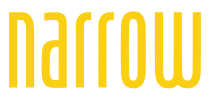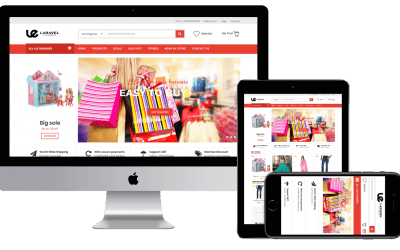One of the best ways to make your small business website profitable is
to optimize your content to get more customers.
What is web content? It’s your written word, the text on your website.
Despite the rise in popularity of video these days, written content is still the most common form of web content in 2016. Your written word can be highly impactful on many fronts; it can grab attention, it can inform your web visitors, and it can entice them to take action.
eHow explains that effective website content is vital for any site because it has the power to engage readers, provide them with the information they seek, and may even convert readers into customers.
To be effective, your content has to earn the readers attention, keep it by telling a beneficial story, be easily digestible, and purpose driven by gently nudging your now engaged audience towards a conversion. For your website’s efforts to be marked as “successful”, you must have your visitors complete an action you’ve set out for them.
For a website visitor to turn into a customer, an action (or conversion) on the behalf of the visitor has to take place. What exactly a conversion is can be reiterated by Bootsuite:
It means getting your visitors to do what you want them to do, whether that is to buy your product, sign up for your newsletter, register for a webinar, download a white-paper, or fill out a lead/contact form.
After all, having a small business website is moot if it doesn’t actively encourage sales, sign ups, or generate new leads for your business. So, in order to write website content that works towards this goal, you’ll first need to know exactly how your audience behaves online.
The sales funnel does not apply
Writing content to entice your lead through each successive stage in the sales funnel used to work as a viable strategy, but online people tend to bounce around and the funnel now has too many holes for visitors to slip in and out of. According to Adage the four stages of the sales funnel (awareness, interest, desire, action) aren’t completely dead, but the predictable nature of leads once they enter the funnel certainly is.
“Today’s shopper jumps in and out of channels, views alternatives to purchases, and searches for better deals — all at the tap of a screen, the click of a button, and oftentimes while standing right in front of the item she’s trying to buy. She doesn’t predictably slide through the funnel, ushered along by our linear marketing messages. Instead, she more closely resembles a ball in a pinball machine, firing off a bunch of different pegs on the way down, sometimes shooting back up to the top of the funnel before ultimately finding her way to a purchase. She continues to move toward a sale, but it’s hard to predict where the bouncing will take her.”
The online business world is more like the wild west than you may have thought. Your potential customers are bouncing around, have no attention spans, and behave erratically – so how can your content possibly encourage a conversion? It’s easy, adapt your formatting to how these people actually read online.
Scanning is the new reading
People don’t read entire pages anymore – they scan them. According to research conducted by the Nielsen Norman Group on how people read websites, 79% of test users scanned any new page they came across, while a mere 16% actually read the page in it’s entirety. What does that mean for your content? It better be succinct, have short paragraphs, focus on clarity, and your headline better reach out to grab an audience’s attention at breakneck speed.
Moreover, Nielsen Norman Group gives a few actionable suggestions; in order to make your website as scannable as possible, you should use:
1. Meaningful sub-headings (not “clever” ones)
2. Bulleted lists
3. One idea per paragraph
4. The inverted pyramid style, starting with the conclusion
5. Half the word count (or less) than conventional writing
Because web audiences tend to scan, you have to shift the focus of your web content from being catchy and creative to simply being clear enough to easily get the gist of. You might be a great writer, this might go against your instincts, but cleverness doesn’t move your audience to convert – clarity does. This point is supported by 100daysofgrowth:
“The writer in you may want to write the next great novel every time you create a blog post. Skip that nonsense and save the creativity for your other projects. It’s not that creative writing is bad, but when your goal is to write copy that persuades and convinces your reader to take action, cleverness and creative references get in the way of clarity.”
This is your small business website – unfortunately you aren’t winning a Pulitzer for your work here – so replace your complicated jargon with laymen’s terms, and cut your long, winding paragraphs into short sentences. Eye-catching simplicity is what sells here, it draws the reader in and keeps them on the page. Start your simplifying from the top – your website’s headline.
Catch eyes with your headlines
We couldn’t write about headlines without mentioning the king of them, David Ogilvy. He might’ve been an advertising maverick way back in the ‘60’s but his writing tips are timeless. In How to Create Advertising that Sells, Ogilvy states that, on average, five times as many people read the headline as read the body. This means that you should spend a generous amount of time crafting your headline because it has the power to catch your audience, and if they like what they see, they’ll read (or at least scan) the content below.
Some tried and tested headline crafting methods from Ogilvy & Mather are as follows:
1. Simple headlines. Your headline should telegraph that you want to say – in simple language. Readers do not stop to decipher the meaning of obscure headlines.
2. Localize headlines. In local advertising (like your small business) it pays to include the name of the city in your headline.
3. Benefit in headlines. Headlines that promise a benefit sell more than those that don’t.
Once you’ve crafted your eye-catching headline, go in for the 1 – 2 punch (so to speak) by immediately following with what’s in it for them.
“Consumers do not buy products. They buy product benefits.”
Your readers are a unique blend of tech-savvy and selfish – they can easily find your competition, your prices, your features, they’ll even read your reviews, but what they really want to know is what’s in it for them. Have your content address how your product/service can benefit your audience directly. Now that you have their attention, optimize your written content and design to keep your audience’s eyes on the page.
Team up written content and design
Let your website’s clear, appealing design do the heavy lifting to compel your online visitor to learn more about your product/service. “the function of design is to get your content read and to create the right “buying environment” for your offer.
Because of how strongly visuals can affect an audience, your site’s design can affect how your written word will be read as well as how your company will be perceived. This means that if your design looks outdated, your business will be perceived as being behind the times, (even if that’s not necessarily the case) and readers will skip over your content. To avoid this, team up design and written content for the same purpose – to increase conversions. To make content and design team up effectively, It is suggests that you:
1. Use high contrast for fonts.
2. Make sure your font doesn’t blend into a background image.
3. Use every element to draw the reader’s attention to your headlines and copy.
4. Employ reverse type sparingly.
As well as font design, don’t underestimate the power of a well placed image/photo. Albeit, images aren’t written content, but they can serve to support your story, increase your reach, and build interest in your business. Websites are a visual medium after all.
As we’ve stated in a previous article on How to Get Great Photography for your Website:
“Having effective photography is so important that professionals spend countless time and money testing their effect on business. Even Barack Obama’s digital team did an A/B test with conversions using two different photo layouts and saw an increase in donations by 49%. AirBnb also thanks professional photography for their 2 – 3x growth in bookings back in 2010.”
Photography, visuals, and design set the stage and enhance your website content so that you have your visitor’s attention drawn to the great story you’ve told.
Tell a simple story
Storytelling has a unique ability to draw your audience in, build a persona for your business, establish a relationship, build credibility, and make the transition from prospect to customer seamlessly. In particular, on the path to conversion, your content has the unique ability to address all of your readers objections through story. Crazyegg lends advice by stating that your visitor will always take a step back to state their objections before purchasing something. Something your written content has to do is successfully pre-empt those objections.
What will the most common objections be? “It’s too expensive”, “Upkeep is too hard”, “It takes too much time” etc etc – cut your customer off by showing them within your story that those objections aren’t true. Write about why you got into business, why your product/service is so different, and what it can do for your reader. Tip: Don’t know where to source possible objections? If you have a sales team, tap them for this, they have a direct line to your customers and will have heard plenty of objections to go around (no matter how good your product/service is).
A simply written story can act as a means to establish initial credibility of your business in the eyes of your reader.
“Storytelling is powerful. It draws readers in and engages them. And the honesty and transparency involved in storytelling is one of the top ways you can build your credibility and authority even in your web copywriting.”
After your story has sparked their initial attention, has built some credibility, let other elements of your content cement your trustworthy status.
Build up your credibility
Once you have their attention and initial trust, your well crafted website content will have the ability to cement your credibility with your audience so they feel more comfortable sticking around, and hopefully, taking action. The importance of credibility to website visitors is highlighted by the Nielsen Norman Group in their research they found that credibility is important for Web users, since it’s unclear who is behind information on the Web and whether a page can be trusted.
The best way to quickly establish this credibility is to have your content a) answer all possible questions, and b) reinforce your value through the use of testimonials/reviews.
Since 81% of Canadians will do research online before making a purchase decision, make sure you answer all possible questions so your audience feels informed enough to be comfortable taking action. Answering common questions, particularly in the form of a FAQ page, has been proven to be one of the best ways to increase your website content’s conversion rate.
“The more certainty you can provide your target audience, the more likely they are to become your customers. Before you start writing [content] for your landing page, ask your customer service team for the most frequent questions asked by customers. Turn them into a FAQs section for your landing page that you can use to pre-emptively answer common questions.”
Now that you have an informed readership, reinforce your small business’s value, along with your content’s conversion rate, by presenting testimonials/reviews. It’s said that approximately 90% of consumers trust online reviews, and while you’d like to help, you just can’t vouch for your business quite like a customer can – so let your satisfied customers write for you. The use of testimonials has a unique power of boosting conversions:
“Testimonials produce conversions like nothing else can. It’s impossible to write copy as good as your customer. Why? Because good copy depends on the source, not just the style and substance. Testimonials are compelling because they show the customer what she will experience if she uses your product or service.”
You have their attention, now use your content to quickly (and easily) tell your audience how they can take one final action – a conversion.
Key Takeaways
1. The sales funnel does not apply – The four stages of the sales funnel (awareness, interest, desire, action) aren’t completely dead, but the predictable nature of leads once they enter it certainly is.
2. Scanning is the new reading – shift the focus of your web content from being catchy and creative to simply being clear
3. Catch eyes and leads with your headlines – concisely tell your audience what’s in it for them
4. Combine written content and design to keep eyes on the page and enhance how your company is perceived.
5. Tell a simple story – draw your audience in, build a persona for your business, establish a relationship, build credibility, address objections, and make the transition from prospect to customer seamlessly.
6. Build up your credibility – have your content answer all possible questions, and reinforce your value through the use of testimonials/reviews.
7. Tell your audience what to do – let your website content give one final push towards a conversion of your choice.
For your website content to work towards your business goals, it has to effectively reach out, keep attention, and land with a conversion. In order to do that, you have to shape your text into something that appeals to both how online audiences read, and how they behave. Simplicity is king in the eye of an audience who tends to scan, rather than read.
For your content to lead to conversions, you need to get your audience’s attention with a strategic headline, draw them in with your design, tell a story to convey your value, boost your credibility, and tell them exactly what to do. With these tips from the pros, your website’s content will realize its potential as a way to reach out to leads and boost conversions – further bolstering your small business website as the backbone to helping you be a better business today.
This article was just one more way you can use your website to help you be a better business.
If you found this article helpful, please share it with your friends!
Article share from Author Ms Sam Gordanier/beamlocal.com








0 Comments